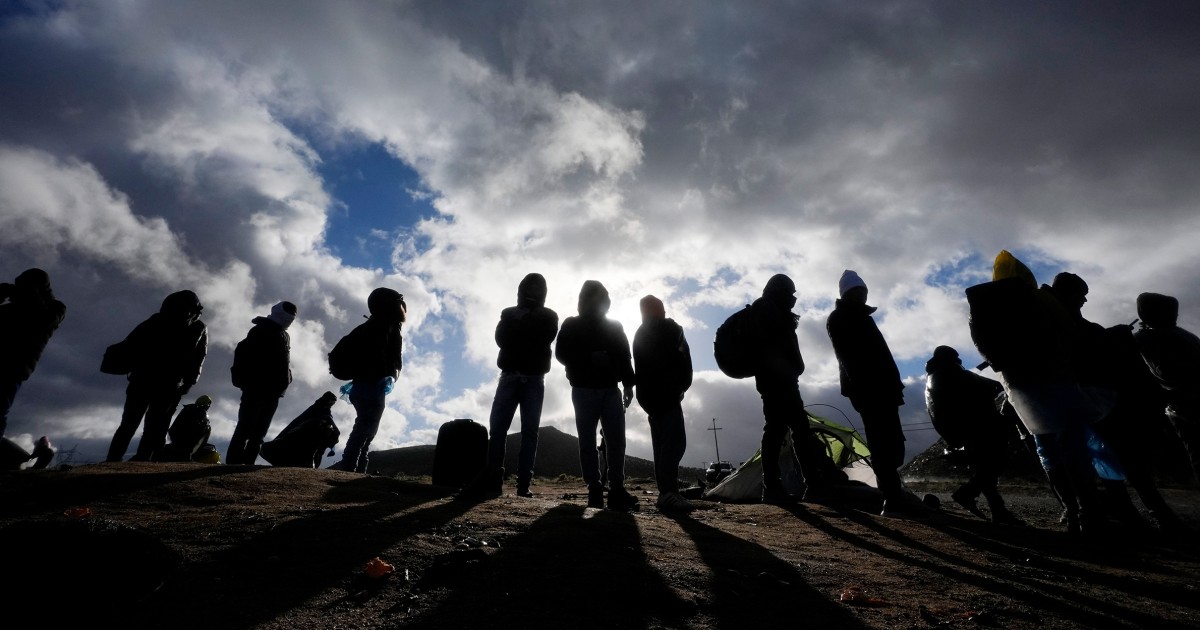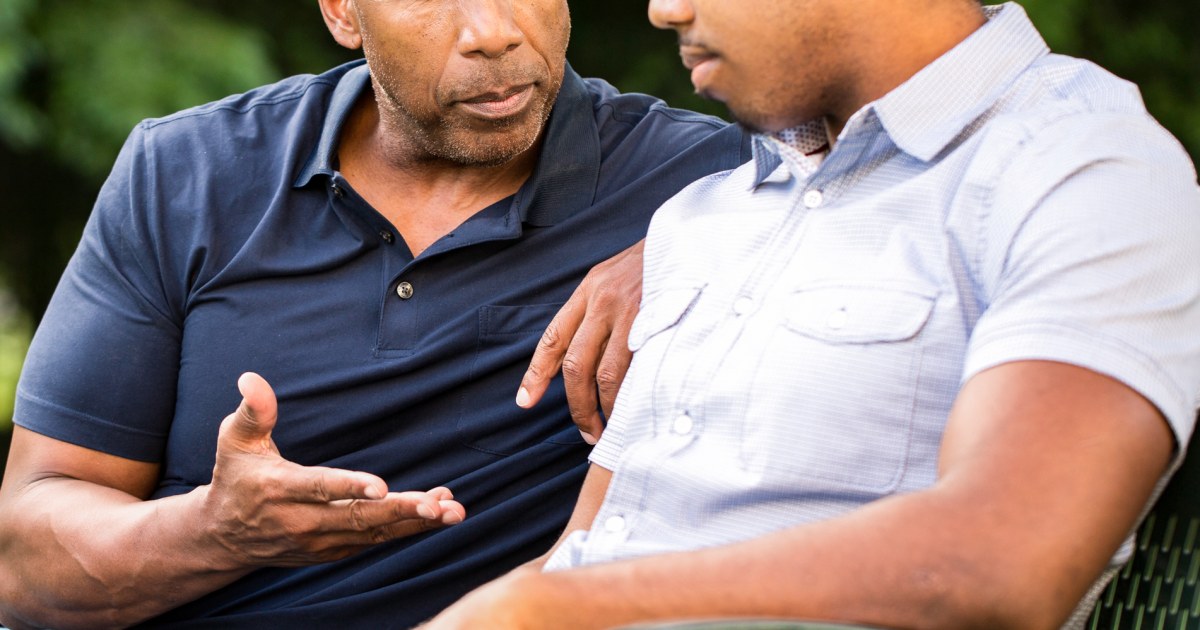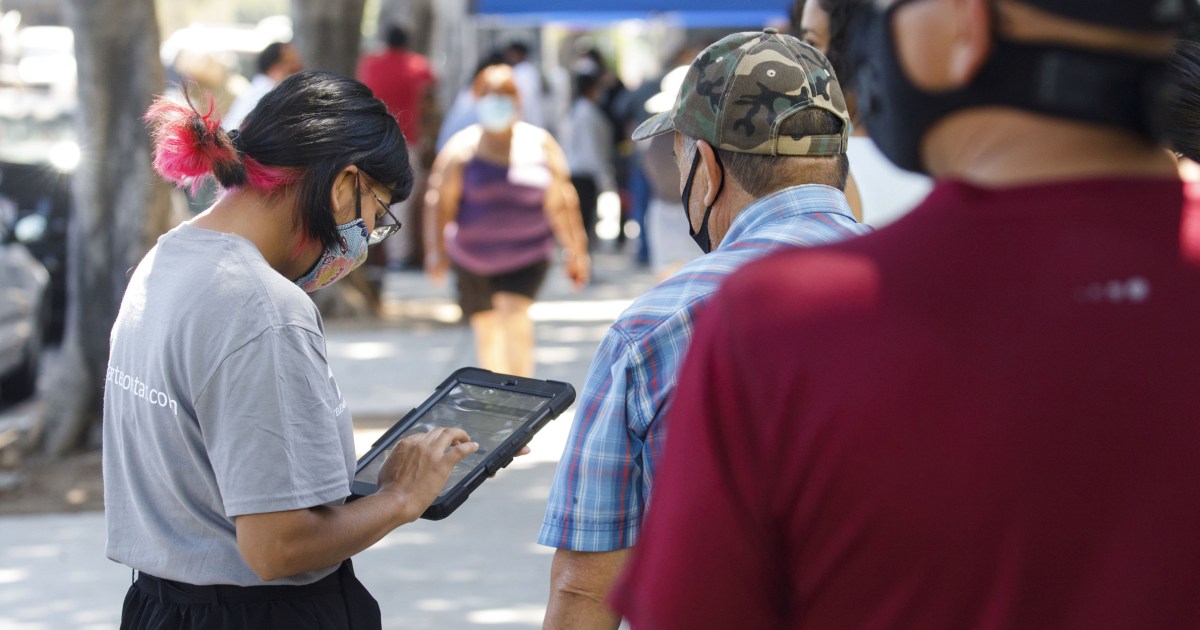- Click to share on Facebook (Opens in a new window)
- Click to share on Twitter (Opens in a new window)
- Click to share on LinkedIn (Opens in a new window)
- Click to email a friend (Opens in a new window)
Why the Pandemic Affects Latinos Most in the US 1:18
Editor's Note: Ed Morales is a journalist and professor at Columbia University's Center for Ethnicity and Race Studies and at CUNY's Craig Newmark School of Journalism. He is the author of the book "Fantasy Island: Colonialism, Exploitation and the Betrayal of Puerto Rico". You can follow him on Twitter @SpanglishKid. The opinions expressed in this column belong exclusively to the author. Read more opinion pieces at CNNE.com/opinion.
(CNN) - Two months after the coronavirus crisis, with many Americans clamoring for a return to the economy as usual, Latinos still mourn the terrible death toll in their communities. An Ecuadorian bus driver in the Bronx passed away at age 66, months before his retirement; an undocumented Guatemalan in Oregon lost his life; and a Salvadoran worker was the first Latino to die at a meat packing plant in Smithfield, South Dakota. All three tell the uneven story of how the coronavirus has profoundly impacted Latinos in the United States.
But these tragedies - as well as the wide-spread calamities caused by wage cuts, job losses, and food insecurity - show that while their experiences and citizenship status vary greatly, Latinos are suffering a disproportionate share of the crisis.
According to recent data provided by New York City, Latinos had the second highest death rate from coronavirus, with 259.2 people per 100,000, behind blacks who average 265. Nationwide, the Center Research Pew reports that Latinos are among those most affected by the coronavirus: 40% of Latinos, compared to 27% of all Americans, had to reduce their wages, while 29% lost their jobs, compared to 20% of the general population. Another recent analysis by Latino advocacy group Mijente found that more than 24% of Latinos work in low-wage jobs, a statistic that doesn't even begin to measure the even lower wages and poorer employment conditions of undocumented workers.
The varied impact of the disease on Latinos gives us the opportunity to speak about the inability to manage the category itself, which was born out of the need for greater visibility and political power for the descendants of Latin Americans in the United States. Since the 1960s and 1970s, terms like "Hispanic" and "Latino" have been used almost interchangeably, although the former is often considered to reflect conservative politics and the latter liberal, while "Latinx", a futuristic label that purporting to be inclusive for LGBTQ non-binary people, it is slowly growing in popularity. Latinos come from 21 different countries (including Puerto Rico, an unincorporated US territory since 1898), descend from several different "races", and do not have uniform social class status. A “Latino” could be a Garifuna from Honduras, descendant of Africans, who lives in Florida; a light-skinned, third-generation Puerto Rican living in New York or a Mixtec-speaking Mexican immigrant living in California, and that doesn't even come close to the surface of our diversity.
But what the coronavirus effect reveals is that the Latino demographic is largely made up of people of color who perform essential and service jobs on the front lines of the transportation systems, hospitals, hospitality industry, and hospitality industries. meat packing and agriculture, with long lack of access to adequate medical care.
Someone like Congresswoman Alexandria Ocasio-Cortez knows how diverse but commonly affected Latinos can be. Its district links parts of the Bronx, which is home to Puerto Ricans and Dominicans, whose migration to the city peaked in the 1960s and 1980s, respectively; and Queens, whose Elmhurst neighborhood is dominated by more recent South American and Mexican immigrants.
"This crisis is not really creating new problems," Ocasio-Cortez said in an interview with The New York Times earlier this month. "It is pouring gasoline on those that already exist," he added.
And those problems, particularly in terms of health crises, go beyond what many of us think. Echoing the treatment of blacks, who suffered immensely from outbreaks of tuberculosis, and were even blamed for the misnamed "Spanish flu," Mexican immigrants and Mexican Americans were often scapegoats for disease carriers. In 1917, many were sprayed with pesticides at disinfection facilities on the El Paso-Juárez border.
Latinos who have been in the United States for several generations share some of the same problems that can be traced back to the structural inequalities faced by blacks. In fact, many Latinos in large cities share a cultural affinity with blacks and identify as Afro-descendant. Long-term marginalization, reinforced by a lack of access to a good education as well as well-paying permanent jobs, wealth creation through home ownership, and, of course, preventive health care exposes them to pre-existing diseases like diabetes , respiratory or heart diseases that can be fatal when contracting coronavirus. In 2019, the CDC reported that Latinos were 1.7 times more likely to be diagnosed with diabetes than whites, and in 2017 they indicated that Latinos were twice as likely to visit an emergency room due to asthma than whites.
Most Latinos in the United States - about 62% - are of Mexican descent and live in the west. A large part of them have a life experience ranging from upward mobility and command of the English language to marginalization in the city center and, finally, the most recent experiences of immigrants, many undocumented, working in dangerous conditions and with bad wages. Farmworkers, already exposed to pesticide risk, have started wearing masks and practicing social distancing, while those who work in meatpacking factories or the food and service sector are constantly exposed.
In Elmhurst and Corona Queens, part of the Ocasio-Cortez district, the local hospital quickly filled up as an early epicenter of the coronavirus, while its residents lived in relentless anxiety. Undocumented immigrants in the community, like so many in many urban areas across the country, do not want to risk receiving emergency care for fear of exposing their immigration status. For Roosevelt Avenue, Elmhurst's main street, and nearby Jackson Heights - with its chain of restaurants, inexpensive shops, and nightlife spots turned into a dark and lonely sadness ride - it is likely to be more difficult to recover from than the wealthier parts of the city.
The pandemic has also greatly impacted Latinos who are trapped in the criminal justice system, and largely overrepresented by mass incarceration in parallel to blacks. Although some jurisdictions are releasing elderly and sick prisoners, incarcerated people are exposed to covid-19 due to unsanitary conditions and reduced space for inmates. Undocumented immigrants in detention centers face similar, if not worse, conditions. Almost 1,000 of them have tested positive for the virus while in ICE custody.
A recent report from New York City stated that 81% of the appearance orders for not respecting social distancing made by the police went to blacks and Latinos, while New Yorkers in privileged neighborhoods violated the rules of wearing masks and distance in a local park.
As a freelance journalist and associate professor, I have the privilege of working from home during the crisis, but as the son of a New York City transit extra-worker, I have a strong empathy for the people on the front line. I have counseled Latino college students who have had to return home with overcrowding and patchy internet service, and fight the alienation of distance learning. Many of them have lost part-time jobs in food service and retail stores and wonder if they will be financially able to stay in school.
Yet every day in my working class neighborhood in the Bronx, blacks, Puerto Ricans, Dominicans, and Mexicans practice social distancing, wear masks, and go to their windows to beat pots and pans every night to celebrate medical workers. and first-line lifeguards. They do so because not only do they have friends and family who have been hospitalized or even lost their lives, but because they have long known that their lives are precarious, that their jobs and livelihoods could disappear in a second, and that it is needed. an extra dose of care, concern and compassion to survive.
covid-19LatinosLatinos in the USA















